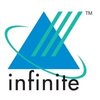Network Support Engineer
100+ Network Support Engineer Interview Questions and Answers

Asked in Sify Technologies

Q. what is protocol, how many type of protocol.
A protocol is a set of rules that governs the communication between devices in a network. There are several types of protocols.
A protocol defines the format, timing, sequencing, and error control of data transmission.
Protocols can be categorized into network protocols, transport protocols, and application protocols.
Examples of network protocols include IP (Internet Protocol), ICMP (Internet Control Message Protocol), and ARP (Address Resolution Protocol).
Transport protocols i...read more

Asked in Sify Technologies

Q. Which protocol has the lowest Administrative Distance (AD) value?
The protocol with the lowest AD value is OSPF (Open Shortest Path First).
AD (Administrative Distance) is a value used by routers to determine the best path for forwarding packets.
Lower AD value indicates a more preferred route.
OSPF has an AD value of 110, which is lower than other routing protocols like RIP (120) and EIGRP (90).
Network Support Engineer Interview Questions and Answers for Freshers

Asked in Cisco

Q. How does DHCP work? Please describe it in two minutes.
DHCP is a network protocol that automatically assigns IP addresses to devices on a network.
DHCP stands for Dynamic Host Configuration Protocol.
It allows devices to obtain IP addresses, subnet masks, default gateways, and other network configuration settings automatically.
DHCP uses a client-server model, where the DHCP server assigns IP addresses to clients.
The DHCP server maintains a pool of available IP addresses and leases them to clients for a specific period of time.
When ...read more

Asked in Infinite Computer Solutions

Q. Which layer does the IP address work on? If it works on Layer 3, how can we assign an IP address on a Layer 2 Switch? Please describe in detail.
The IP address works at Layer 3 of the OSI model. Assigning an IP address on a Layer 2 switch is not possible.
IP addresses are used for network layer communication (Layer 3)
Layer 2 switches operate at the data link layer (Layer 2)
Layer 2 switches use MAC addresses for communication within a local network
IP addresses are assigned to devices connected to Layer 2 switches, not to the switch itself

Asked in Sify Technologies

Q. Which layers are at the heart of the OSI model?
The layers that call to the heart of OSI are the Transport layer and the Application layer.
The Transport layer is responsible for the end-to-end delivery of data and ensures reliable communication between hosts.
The Application layer provides services directly to the end-user and includes protocols like HTTP, FTP, SMTP, etc.
These layers interact with the heart of the OSI model, which is the core of the network architecture.
The heart of OSI represents the central processing and...read more

Asked in Sify Technologies

Q. Which protocols work with application layers?
Protocols that work with Application layers include HTTP, FTP, SMTP, DNS, and SNMP.
HTTP (Hypertext Transfer Protocol) is used for web browsing and communication between web servers and clients.
FTP (File Transfer Protocol) is used for transferring files between a client and a server.
SMTP (Simple Mail Transfer Protocol) is used for sending and receiving email messages.
DNS (Domain Name System) is used for translating domain names into IP addresses.
SNMP (Simple Network Management...read more
Network Support Engineer Jobs




Asked in Infinite Computer Solutions

Q. What is the OSI model, and can you describe the function and functionality of each layer?
The OSI model is a conceptual framework that standardizes the functions of a communication system into seven layers.
Layer 1 (Physical): Deals with the physical transmission of data over the network.
Layer 2 (Data Link): Provides error-free transmission of data frames between nodes on the same network.
Layer 3 (Network): Handles routing and logical addressing to enable data transfer between different networks.
Layer 4 (Transport): Ensures reliable delivery of data by segmenting a...read more

Asked in Sify Technologies

Q. What is the OSI Model and how many layers does it have?
The OSI Model is a conceptual framework that standardizes the functions of a communication system into seven layers.
The OSI Model stands for Open Systems Interconnection Model.
It was developed by the International Organization for Standardization (ISO) in 1984.
The model helps in understanding how different network protocols and technologies interact.
It divides the network communication process into seven layers, each with its own specific functions.
The layers are: Physical, D...read more
Share interview questions and help millions of jobseekers 🌟


Asked in Infinite Computer Solutions

Q. What is the main function of the Root bridge switch?
The main function of the Root bridge switch is to control the flow of data traffic in a spanning tree network.
The Root bridge switch is elected as the central point of the spanning tree network.
It determines the shortest path for data traffic to reach all other switches in the network.
The Root bridge switch sends Bridge Protocol Data Units (BPDUs) to other switches to exchange information and maintain the spanning tree topology.
It helps prevent loops and ensures a loop-free n...read more

Asked in Infinite Computer Solutions

Q. what is the ssh port number and why we used the ssh service ?
SSH port number is 22. SSH service is used for secure remote access and secure file transfer.
SSH port number is 22 by default
SSH stands for Secure Shell
SSH service provides secure remote access to servers
It encrypts the data transmitted over the network
SSH service is used for secure file transfer (SFTP) and remote command execution
It provides authentication and encryption for secure communication

Asked in Cisco

Q. Which tool do you use for router configuration?
The tool commonly used for configuring routers is a command-line interface (CLI).
Command-line interface (CLI) is the primary tool for configuring routers.
CLI allows network engineers to enter commands to configure various settings on the router.
Examples of CLI tools for router configuration include Cisco IOS CLI, Juniper Junos CLI, and Huawei VRP CLI.

Asked in Sify Technologies

Q. What is Active Directory and its range?
AD stands for Active Directory, which is a directory service used in Windows environments. Range refers to a specific set of values or a span of numbers.
AD is a centralized database that stores information about network resources, such as users, computers, and groups.
It provides authentication and authorization services, allowing users to access resources based on their permissions.
AD uses a hierarchical structure with domains, trees, and forests to organize and manage networ...read more

Asked in Infinite Computer Solutions

Q. What is the TCP/IP model and why is it used in the current scenario?
The TCP/IP model is a network protocol suite that defines how data is transmitted over the internet.
The TCP/IP model consists of four layers: Network Interface, Internet, Transport, and Application.
It is used in the current scenario because it provides a standardized framework for communication between devices on a network.
The TCP/IP model allows for reliable and efficient data transmission, ensuring that data packets are delivered accurately and in the correct order.
It is wi...read more
Asked in Vaya Technologies

Q. What is OSPF, and can you describe the different types of LSAs and their information?
OSPF is a link-state routing protocol used for IP networks, enabling efficient routing through the exchange of LSA information.
OSPF stands for Open Shortest Path First, a widely used interior gateway protocol.
It uses a link-state routing algorithm to maintain a complete topology of the network.
OSPF routers exchange information using Link State Advertisements (LSAs).
There are several types of LSAs, including Type 1 (Router LSA), Type 2 (Network LSA), and Type 3 (Summary LSA).
T...read more

Asked in Infinite Computer Solutions

Q. Which router series and vendors have you worked with?
I have worked on various router devices and vendors.
Cisco routers (e.g. Cisco 2900 series)
Juniper routers (e.g. Juniper MX series)
Huawei routers (e.g. Huawei NE series)
MikroTik routers (e.g. MikroTik RB series)

Asked in CBSI

Q. what is yum ? whay we are using yum in linux ?
yum is a package manager for Linux that automates software installation, updates, and removal.
yum stands for Yellowdog Updater Modified
It is used to manage packages and dependencies in Red Hat-based Linux distributions
It can be used to install, update, and remove software packages
It automatically resolves dependencies and downloads necessary packages
Examples of yum commands include 'yum install', 'yum update', and 'yum remove'
Asked in Vaya Technologies

Q. why we use Vlan concept and what is the range of the vlan?
VLANs are used to logically segment a network, improving security, performance, and manageability. The range of VLANs is from 1 to 4094.
VLANs provide network segmentation, allowing different groups of devices to be isolated from each other.
They enhance security by controlling access between VLANs using access control lists (ACLs).
VLANs improve network performance by reducing broadcast traffic and optimizing network traffic flow.
They simplify network management by allowing adm...read more

Asked in Cisco

Q. How can multiple networks be created in a short amount of time?
Use network automation tools like Ansible or Python scripts to quickly create multiple networks.
Utilize network automation tools like Ansible or Python scripts
Create templates for network configurations to speed up the process
Use network virtualization technologies like VLANs or VXLANs to segment networks
Leverage cloud-based network services for rapid deployment
Consider using network automation platforms like Cisco DNA Center or Juniper Contrail

Asked in InKnowTech

Q. Why would a company hire a technical person for a non-technical role, such as ticket issuing?
Hiring a technical person for a non-technical role can enhance efficiency and problem-solving in ticket management.
Technical expertise can improve ticket resolution times, as the individual can quickly diagnose issues.
Having a technical background allows for better communication with engineering teams, ensuring accurate ticket escalation.
A technical person can identify patterns in ticket issues, leading to proactive solutions and reduced future tickets.
They can provide insigh...read more

Asked in Sage IT

Q. What is the packet flow process in a Checkpoint firewall?
Packet flow process in a Checkpoint firewall involves several steps including inspection, matching rules, and forwarding.
Packet enters the firewall and is inspected by the Security Gateway
Packet is matched against the security policy rules
If a match is found, the packet is either accepted or dropped
If accepted, the packet is forwarded to its destination
If no match is found, the default action specified in the policy is taken

Asked in Allied Digital Services

Q. What can you tell us about TCP/IP stack? How is it different than OSI Model.
TCP/IP stack is a set of protocols used for communication over the internet, while OSI Model is a conceptual framework for understanding network communication.
TCP/IP stack is a practical implementation of networking protocols used for communication over the internet.
It consists of four layers: Application, Transport, Internet, and Link.
Each layer has its own set of protocols and functions, such as HTTP, TCP, IP, and Ethernet.
OSI Model, on the other hand, is a theoretical fram...read more

Asked in Cisco

Q. What are the differences between a Public IP and a Private IP?
Public IP is a unique address assigned to a device on the internet, while Private IP is used within a local network.
Public IP is globally unique and can be accessed from anywhere on the internet.
Private IP is used within a local network and is not accessible from the internet.
Public IP is assigned by the Internet Service Provider (ISP) to identify a device on the internet.
Private IP is assigned by a local network administrator to identify devices within the network.
Public IP ...read more

Asked in Akshara Enterprises

Q. What is Spanning Tree Protocol, and how does it work?
Spanning tree is a protocol that prevents loops in a network by selectively blocking redundant paths.
Spanning tree protocol (STP) is used to prevent network loops
It works by selectively blocking redundant paths
STP elects a root bridge and calculates the shortest path to it
It uses Bridge Protocol Data Units (BPDUs) to communicate with other switches
STP can be configured with different modes such as Rapid Spanning Tree Protocol (RSTP) and Multiple Spanning Tree Protocol (MSTP)


Q. What steps do you follow for troubleshooting network issues?
I follow a systematic approach for troubleshooting network issues.
Gather information about the issue reported
Check physical connections and cables
Verify network settings and configurations
Use network monitoring tools to identify bottlenecks
Isolate the problem by testing components individually
Implement solutions and test to confirm resolution

Asked in Infinite Computer Solutions

Q. What is the port number for DNS, and how does it work?
DNS uses port number 53. It works by translating domain names into IP addresses and vice versa.
DNS stands for Domain Name System.
Port number 53 is used for both TCP and UDP protocols.
DNS works by resolving domain names to their corresponding IP addresses.
It uses a hierarchical distributed database system.
DNS queries and responses are sent over port 53.
DNS operates through a client-server model.
Example: When you type a website URL, DNS translates it to the IP address of the se...read more

Asked in Akshara Enterprises

Q. Switching concepts! like it's states,functionalities...
Switching concepts refer to the functionalities and states of network switches.
Switching is the process of forwarding data packets between network devices.
Switches operate at the data link layer of the OSI model.
Switches use MAC addresses to forward packets to the correct destination.
Switches can operate in different modes such as access, trunk, and VLAN.
Switches can also perform functions such as port security, QoS, and STP.
Examples of switches include Cisco Catalyst, Junipe...read more

Asked in Bharti Airtel

Q. What are the key functions and differences between switches and routers in the context of CCNA?
Switches connect devices within a network, while routers connect different networks, directing data between them.
Functionality: Switches operate at Layer 2 (Data Link) of the OSI model, forwarding frames based on MAC addresses, while routers operate at Layer 3 (Network) and route packets based on IP addresses.
Network Segmentation: Switches create separate collision domains for each connected device, improving network efficiency, whereas routers create separate broadcast domai...read more

Asked in Sage IT

Q. What are Network Address Translation (NAT) and its types?
NAT is a process used in routers to modify network address information in packet headers.
NAT allows multiple devices on a local network to share a single public IP address.
Types of NAT include Static NAT, Dynamic NAT, and Port Address Translation (PAT).
Static NAT maps a private IP address to a public IP address on a one-to-one basis.
Dynamic NAT assigns a public IP address from a pool of available addresses on a first-come, first-served basis.
PAT allows multiple private IP add...read more

Asked in Sage IT

Q. What is the command used to capture live network traffic?
The command used to capture live network traffic is 'tcpdump'.
Use the 'tcpdump' command followed by appropriate options to capture live network traffic.
For example, 'tcpdump -i eth0' captures traffic on the eth0 interface.
You can also use filters with tcpdump to capture specific types of traffic, such as 'tcpdump port 80' to capture traffic on port 80.

Asked in Domino's Pizza

Q. Dhcp server assign ip address to the devices which are connected to the internet
No, DHCP servers assign IP addresses to devices within a local network, not to devices connected to the internet.
DHCP servers assign IP addresses to devices within a local network
Devices connected to the internet may receive IP addresses from their ISP
DHCP servers help manage IP address allocation and configuration
Interview Questions of Similar Designations
Interview Experiences of Popular Companies





Top Interview Questions for Network Support Engineer Related Skills

Calculate your in-hand salary
Confused about how your in-hand salary is calculated? Enter your annual salary (CTC) and get your in-hand salary


Reviews
Interviews
Salaries
Users










